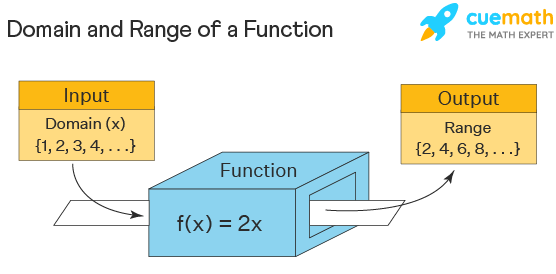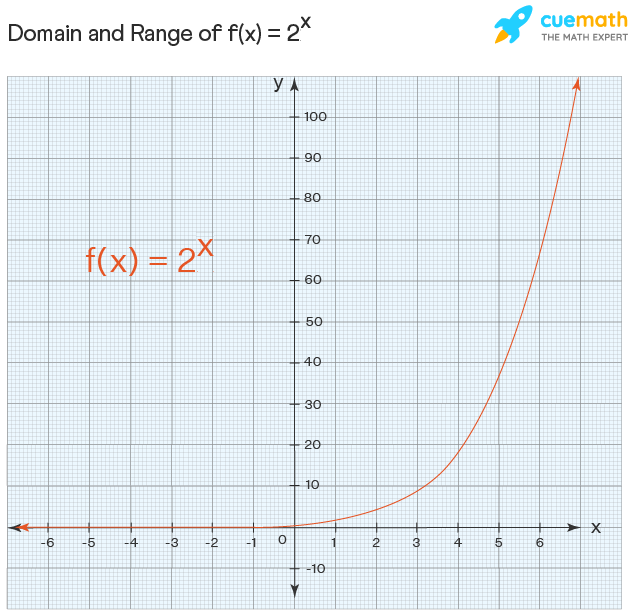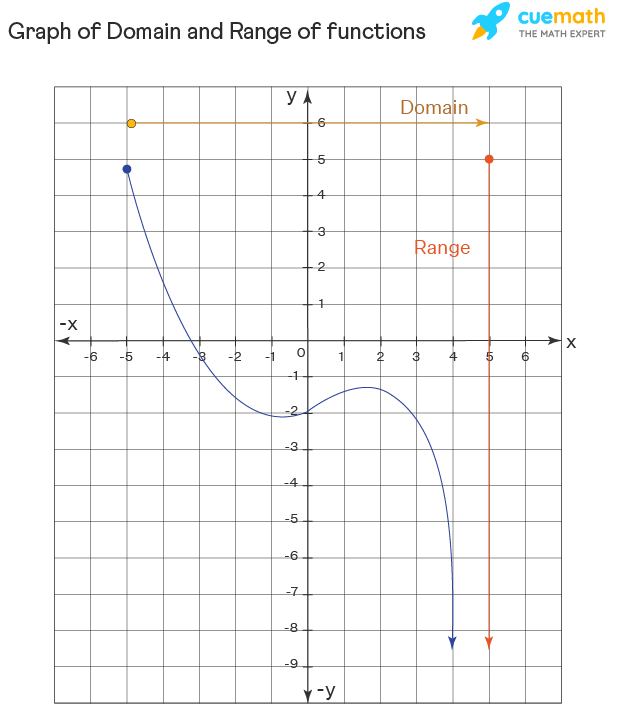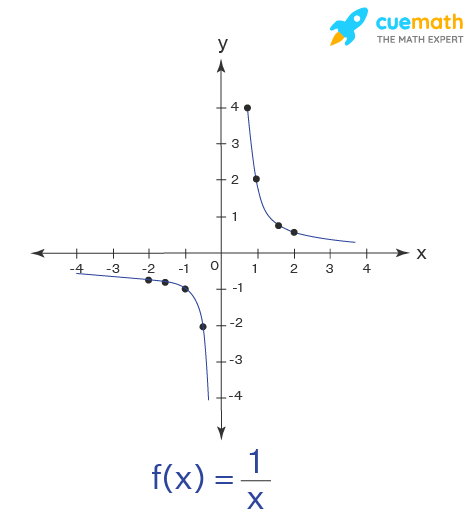domain and range from a graph puzzle answer key
Domain and Range
Functions in mathematics can be compared to the trading operations of a vending (soda) machine. When you put option in a certain amount of money, you can select different types of sodas. Similarly, for functions, we input different Book of Numbers and we obtain new numbers as the effect. Domain and rank are the main aspects of functions. You can use quarters and one-dollar bills to buy a soda as. The machine leave not give you any flavor of the pop if pennies are input. Hence, the domain represents the inputs we can have here, that is, living quarters and one-buck bills. No count what come you pay, you won't get a cheeseburger from a washing soda motorcar. Thence, the stove is the possible outputs we can bear here, that is, the flavors of soda in the machine. Let us learn to find the domain and range of a given part, and also chart them.
| 1. | What is Domain and Range? |
| 2. | Domain and Range of a Function |
| 3. | Domain of a Officiate |
| 4. | Range of a Function |
| 5. | How To Find Region And Ramble? |
| 6. | Domain and Range of Exponential Functions |
| 7. | Domain and Range of Trigonometric Functions |
| 8. | Domain and Reach of an Absolute Time value Function |
| 9. | Graphs of Area and Range |
| 10. | FAQs on Region and Range |
What is Realm and Range?
The domain and range are defined for a relation and they are the sets of all the x-coordinates and all the y-coordinates of ordered pairs severally. E.g., if the coition is, R = {(1, 2), (2, 2), (3, 3), (4, 3)}, then:
- Domain = the set of all x-coordinates = {1, 2, 3, 4}
- Range = the set of all y-coordinates = {2, 3}
We can visualize this hither:

Domain and Range of a Function
The domain and grade of a function are the components of a function. The domain is the set of all the input values of a subprogram and range is the possible output inclined by the function. Domain→ Occasion →Drift. If on that point exists a function f: A →B such that every element of A is mapped to elements in B, and so A is the domain and B is the carbon monoxide-domain. The image of an element 'a' under a relation R is given by 'b', where (a,b) ∈ R. The range of the function is the set of images. The domain and set out of a operate is denoted in general as follows: Domain(f) = {x ∈ R} and range(f)={f(x) : x ∈ demesne(f)}

The domain and range of this procedure f(x) = 2x is given as domain D ={x ∈ N } , range R = {(y): y = 2x}
Domain of a Function
A domain of a part refers to "all the values" that move in a function. The domain of a function is the set of all possible inputs for the function. Consider this box as a function f(x) = 2x . Inputting the values x = {1,2,3,4,...}, the domain is plainly the set of natural numbers and the output values are called the range of mountains. But in general, f(x) = 2x is defined for all real values of x and hence its land is the set of all real numbers which is denoted aside (-∞, ∞). Present are the general formulas used to retrieve the realm of different types of functions. Here, R is the set of totally real Numbers.
- Sphere of whatever polynomial (linear, quadratic, cubelike, etc) function is R.
- Domain of a square root function √x is x≥0.
- Domain of an mathematical notation function is R.
- Domain of logarithmic function is x>0.
- To find the domain of a rational function y = f(x), set the denominator ≠ 0.
Range of a Function
The range of a work is the set of all its outputs. Example: Let us consider the function f: A→ B, where f(x) = 2x and each of A and B = {set of spontaneous numbers pool}. Here we say A is the domain and B is the co-domain. Then the output of this subprogram becomes the ambit. The range = {set of even uncolored numbers}. The elements of the realm are called pre-images and the elements of the Colorado-area which are mapped are called the images. Here, the range of the operate f is the set of every images of the elements of the domain (or) the set of all the outputs of the function. In the upcoming sections, we can insure how to see the range of opposite types of functions. Here are the general formulas used to observe the range of different types of functions. Distinction that R is the set of all real numbers here.
- Range of a linear routine is R.
- Rate of a quadratic equation part y = a(x-h)2 + k is:
y≥k, if a>0 and
y≤k, if a<0 - Range of a square root subprogram is y≥0.
- Range of an exponential is y>0.
- Range of logarithmic function is R.
- To get the roam of a coherent function y = f(x), solve information technology for x and set the denominator ≠ 0.
How To Get Domain And Range?
Presuppose X = {1, 2, 3, 4, 5}, f: X → Y, where R = {(x,y) : y = x+1}.
Sphere = the input values. Thus Domain = X = {1, 2, 3, 4, 5}
Range = the output values of the subroutine = {2, 3, 4, 5, 6}
and the co-domain = Y = {2, 3, 4, 5, 6}
Let's understand the orbit and range of some especial functions pickings unusual types of functions into consideration.
Domain and Browse of Exponential Functions
The purpose y = ax, a ≥ 0 is formed for all actual numbers. Thu, the orbit of the exponential function is the entire real line. The mathematical notation function always results in a positive appreciate. Thus, the range of the exponential is of the form y= |ax+b| is y ∈ R , {y > 0}. Domain = R, Ambit = (0, ∞)
Example: Consider the graph of this function f: 2x

Observe that the value of the function is nigher to 0 Eastern Samoa x tends to ∞ but it will ne'er strike the value 0. The realm and range of an exponential functions are given as follows:
- Domain: The domain of the function is the set R.
- Range: The exponential subroutine forever results in positive material values.
Domain and Range of Trigonometric Functions
Search at the graph of the sine use and cos social function. Notice that the value of the functions oscillates betwixt -1 and 1 and it is defined for all real numbers.

Thus, for each of the sin and cos functions:
- Area: The domain of the functions is the set R.
- Range: The mountain range of the functions is [-1, 1]
The area and array of all trigonometric functions are shown below:
| Trigonometric Functions | Domain | Range |
|---|---|---|
| Sinθ | (-∞, + ∞) | [-1, +1] |
| Cosθ | (-∞ +∞) | [-1, +1] |
| Tanθ | R - (2n + 1)π/2 | (-∞, +∞) |
| Cotθ | R - nπ | (-∞, +∞) |
| Secθ | R - (2n + 1)π/2 | (-∞, -1] U [+1, +∞) |
| Cosecθ | R - nπ | (-∞, -1] U [+1, +∞) |
Domain and Range of an Absolute Value Function
The function y=|ax+b| is defined for all real numbers game. So, the domain of the absolute value function is the set of all real numbers. The absolute value of a number always results in a non-dismissive value. Thus, the range of an absolute value function of the form y= |ax+b| is y ∈ R | y ≥ 0. The domain and range of an absolute value use are given as follows
- Demesne = R
- Ramble = [0, ∞)
Exemplar: |6-x|
- Domain: The arena of the function is the put on R.
- Range: We already hump that the absolute value function results in a non-veto value e'er. i.e., |6-x| ≥ 0, for all x.
Domain and Array of a Square Root Function
The function y= √(ax+b) is defined only for x ≥ -b/a
And so, the domain of the square root function is the band of all real numbers greater than or up to b/a. We know that the direct etymon of something always results in a non-negative value. Thus, the range of a squared root social function is the set of totally not-negative real numbers. The domain and range of a second power root function are acknowledged as: Domain = [-b/a,∞), Place = [0,∞)
Example: y= 2- √(-3x+2)
Demesne: A square root function is delimited only when when the value inner information technology is a not-destructive turn. And so for a domain,
-3x+2 ≥ 0
-3x ≥ -2
x ≤ 2/3
Range: We already know that the square root function results in a non-negative value always.
√(-3x+2)≥ 0
Breed -1 on some sides
-√(-3x+2) ≤ 0
Adding 2 connected both sides
2-√(-3x+2)≤ 2
y≤ 2
Graphs of Sphere and Range
Another way to name the domain and range of functions is by victimisation graphs. The domain refers to the set of possible input signal values. The domain of a graph consists of all the input values shown on the x-axis. The range is the set of possible output values shown on the y-axis. The easiest method to find the range of social function is by graphing information technology and looking for the y-values mossy past the graph. To find the range of a rectangle function, it is ample to see if IT has a maximal or minimum value. The maximum/marginal value of a number function is the y-coordinate of its vertex. To recover the domain of the rational function, set the denominator equally 0 and solve for the variable. The realm is denoted by all the values from nigh to all along the x-axis and the place is given by the dyad of the graph from the top to the bottom.

Important Notes on Domain and Range:
- The orbit and range of function is the set of all possible inputs and outputs of a function respectively.
- The orbit and range of a function y = f(x) is given as domain= {x ,x∈R }, vagabon= {f(x), x∈Domain}.
- The domain and grasp of any social function can be plant algebraically or diagrammatically.
☛ Also Check:
- Graphing Functions
- Cubic Functions
- Inverse Trigonometric Functions
Examples on Orbit and Range
go to slidego to slidego to slide

Great learning in high school using simplex cues
Indulging in rote learning, you are likely to forget concepts. With Cuemath, you will learn visually and be surprised by the outcomes.
Book a Free Test Grade
Practice Questions on Domain and Orbit
die out to slidego to slide
FAQs happening Domain and Range
What is the Sphere and Range of a Function?
The domain and range of a function are the set of all the inputs and outputs a use can give respectively. The domain and range are immodest aspects of a function. The domain takes all the possible input values from the set of real numbers and the browse takes all the output values of the function.
How Do You Write the Domain and Range?
We write the domain and range of a function as the set of all the inputs a function can take and the outputs of the functions respectively. The domain and range are engrossed from the small values to the larger values. The domain is written from left to letter-perfect and the range is written from the acme of the graph to the bottom.
What is The Natural Domain and Grasp of a Function?
The natural domain and range of a function are all the achievable input values and the output values of the function respectively. Domain(f) = {x∈R} and range(f)={f(x):x ∈ domain(f)}.
What is The Domain and Vagabon of a Constant Function?
Let the ceaseless function be f(x)=k. The domain of a unvarying function is given aside R, that is, the set of real Numbers. The range of a constant operate is apt by the singleton set, {k}. The domain and range of a constant function is given arsenic domain = x∈R and range = {k}, which is a singleton solidification.
How to Find the World of a Go which is Coherent?
To find the arena of a rational function, we just exercise set the denominator non equal to zero. For example, to encounte the land of f(x) = 2/(x-3), we set x-3 ≠ 0, by solving this, we perplex x≠3. Then the demesne is the circle of all rational Numbers except 3. This can be written in the time interval notation as (-∞, 3) U (3, ∞).
How to Witness the Range of a Rational Function?
To find the roam of a noetic function, we just solve the equation for x and apply determine the denominator not equal to zero. For exemplar, to find the run of y=2/(x-3), solve it for x first. Then we get, x-3 = 2/y and from this, x = (2/y) + 3. So its range is y≠0 (or) in interval notational system, (-∞, 0) U (0, ∞).
What are the Rules to Find the Land of a Function?
Hera are whatsoever general rules wont to find domain of distinguishable types of functions:
- f(x) = multinomial, the orbit is the set of all real numbers.
- f(x) = 1/x, domain if the set of each sincere numbers but x≠0.
- f(x) = √x, domain if the set of all real numbers racket much that x ≥ 0.
- f(x) = ln x, domain is the dictated of all real numbers much that x > 0.
How to Find The Domain and Lay out of Function Algebraically?
Let the function be y=f(x). Let us find the domain and range of this function algebraically.
To calculate the sphere of the function, we simply solve the equation to determine the values of the independent variable x. To calculate the range of the role, we simply express x as x = g(y) and then find the domain of g(y).
How to Find The Domain and Range of an Equation?
To find the realm and range, we merely solve the equation y = f(x) to determine the values of the experimental variable x and obtain the sphere. To calculate the range of the function, we bu express x as x=g(y) and then find the domain of g(y).
What Is The Difference Between Domain and Roll of a Function?
Domain and Range of a officiate are the components of a function. The domain of a work is the set of completely realizable inputs for the function, whereas the range of function is the set of all the outputs a function can give.
What is The Domain and Range of a Sex act?
the region and range of a sex act is found Eastern Samoa follows. Let R be the relation from a non-empty lay A to a not-void down B. The domain and range of the relation are the set of first elements and the second elements respectively in the ordered pairs in relation R is called the domain.
What is the Domain and Range of Composite Functions?
Let the composite function be \(h=f \circ g\). The domain and range of h are obstinate Eastern Samoa follows. The domain of h is either same As f or lies within the domain of f. The range h must lie inside the tramp of g. Let f(x) = x2 and g(x) = x+ 3. We know that f: X →Y and g: Y →Z. Then fog: X →Z. f(g(x)) = (x+3)2. Thus the domain and range are: domain= {All the elements in set X}, range= {all the elements in set Z}
What is the Domain and Graze of a Quadratic Function?
The domain and range of a quadratic social function y=a(x-h)2+k find out the nature of the parabola: whether it is upwards or downwards or cladding to the left or to the precise.
- y ≥ k, if the function has a minimum time value, that is, when a>0(parabola opens up)
- y ≤ k, if the function has a maximum value, that is, when a<0(parabola opens down)
domain and range from a graph puzzle answer key
Source: https://www.cuemath.com/calculus/domain-and-range-of-a-function/

Posting Komentar untuk "domain and range from a graph puzzle answer key"